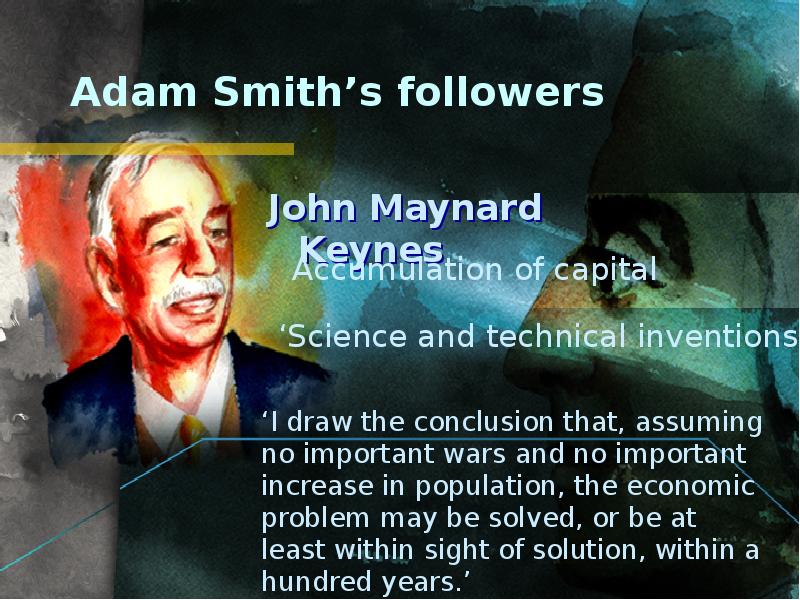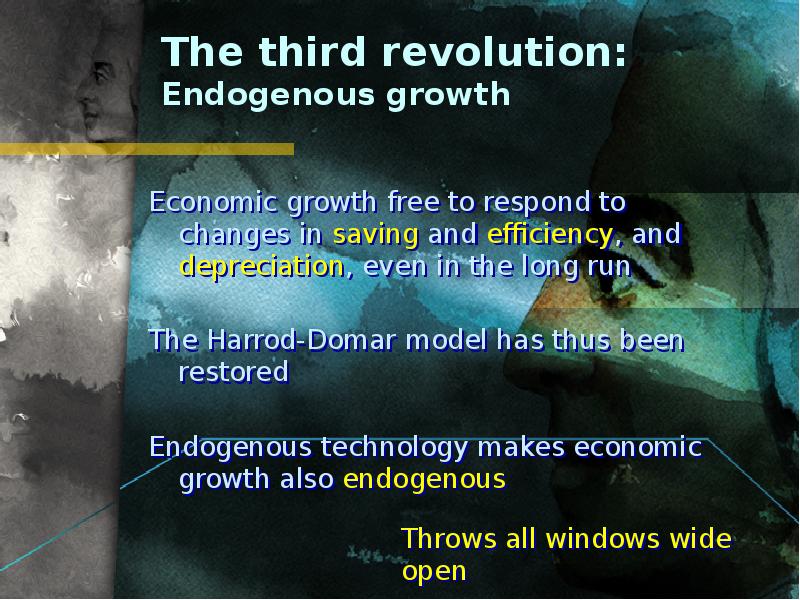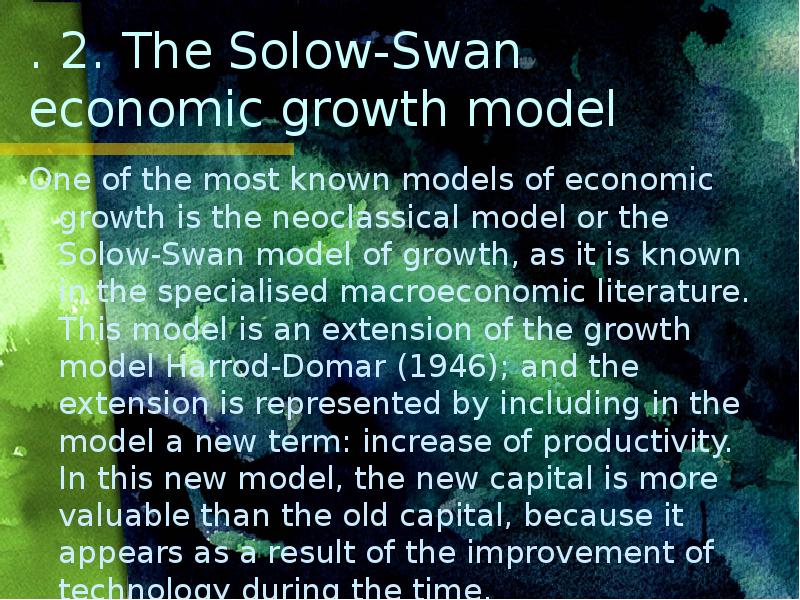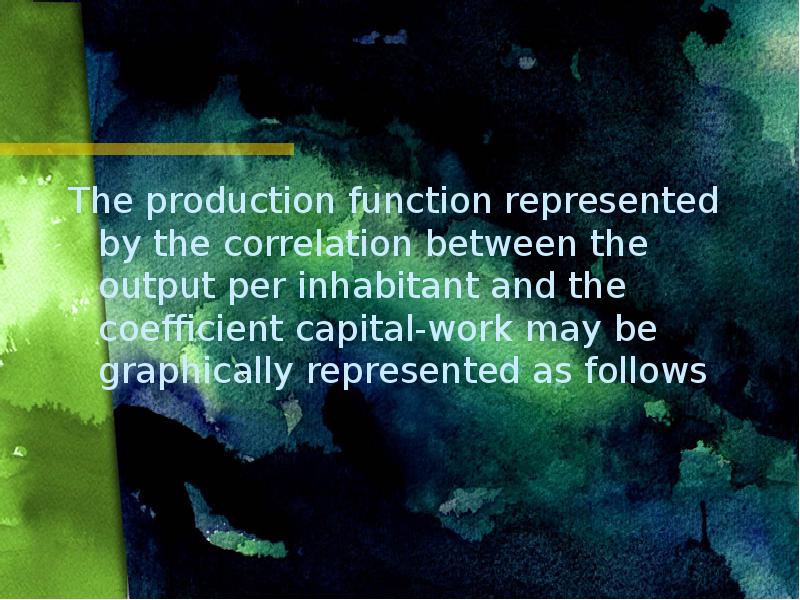UNIT 8. MODELS OF ECONOMIC GROWTH презентация
Содержание
- 2. Topics: Roots and Branches Adam Smith and classic evolution The Solow-Swan
- 3. references: Barro, R., „Notes on Growth Accounting”, Working Paper, No. 6654,
- 4. The economic growth is a notion which grids The economic growth
- 5. According to mainstream and to most of the economics textbooks, this
- 6. One good example in this direction is represented by the emergence
- 7. All above-mentioned growths must be comprised in models, because the systematic
- 8. Traces the history of economic growth theory Traces the history of
- 9. The economic growth models were interesting for the economists ever since
- 10. Roots and Branches The proximate causes of economic growth are the
- 11. The first revolution: Adam Smith Theory of wealth creation, public policy,
- 12. The first revolution: Adam Smith Saving and investment stimulate growth direct
- 13. The first revolution: Adam Smith Smith’s reference to ‘private misconduct’ and
- 14. The first revolution: Adam Smith
- 15. The first revolution: Adam Smith Benefits from division of labour
- 16. The first revolution: Adam Smith Smith on education, efficiency, and growth
- 17. The first revolution: Adam Smith - Summing up Economic growth =
- 18. Adam Smith’s followers
- 19. Adam Smith’s followers John Stuart Mill rejected Malthus’s prediction that population
- 20. Adam Smith’s followers Karl Marx Economic mechanisms driving production and distribution
- 21. Adam Smith’s followers Alfred Marshall organization as a fourth factor of
- 22. Adam Smith’s followers Joseph Schumpeter technology through invention, innovation, and entrepreneurship
- 23. Adam Smith’s followers John Maynard Keynes
- 24. Enter mathematics: Harrod and Domar Paul Samuelson’s Foundations of Economic Analysis
- 25. Enter mathematics: Harrod and Domar
- 26. Enter mathematics: Harrod and Domar
- 27. Enter mathematics: Harrod and Domar Harrod and Domar expressed the dynamic
- 28. The Harrod-Domar model Economic growth depends on three factors: A. the
- 29. The Harrod-Domar model Shortcomings: Neither theory nor empirical evidence seemed to
- 30. The second revolution: The neoclassical model
- 31. The second revolution: The neoclassical model
- 32. The second revolution: The neoclassical model
- 33. The third revolution: Endogenous growth The neoclassical growth model seemed unable
- 34. The third revolution: Endogenous growth Do poor countries grow more rapidly
- 35. The third revolution: Endogenous growth Key idea Technology is probably
- 36. The third revolution: Endogenous growth Economic growth free to respond to
- 38. The third revolution: Endogenous growth - Summary
- 39. . 2. The Solow-Swan economic growth model One of the most
- 40. Questions for review 1. Suppose foreign trade stimulates economic growth as
- 41. Questions for review 3. Explain how more and better education affects
- 42. Further, we will briefly present few of the main characteristics of
- 43.
- 44. The production function represented by the correlation between the output per
- 46. Скачать презентацию













































Слайды и текст этой презентации
Скачать презентацию на тему UNIT 8. MODELS OF ECONOMIC GROWTH можно ниже:
Похожие презентации





























